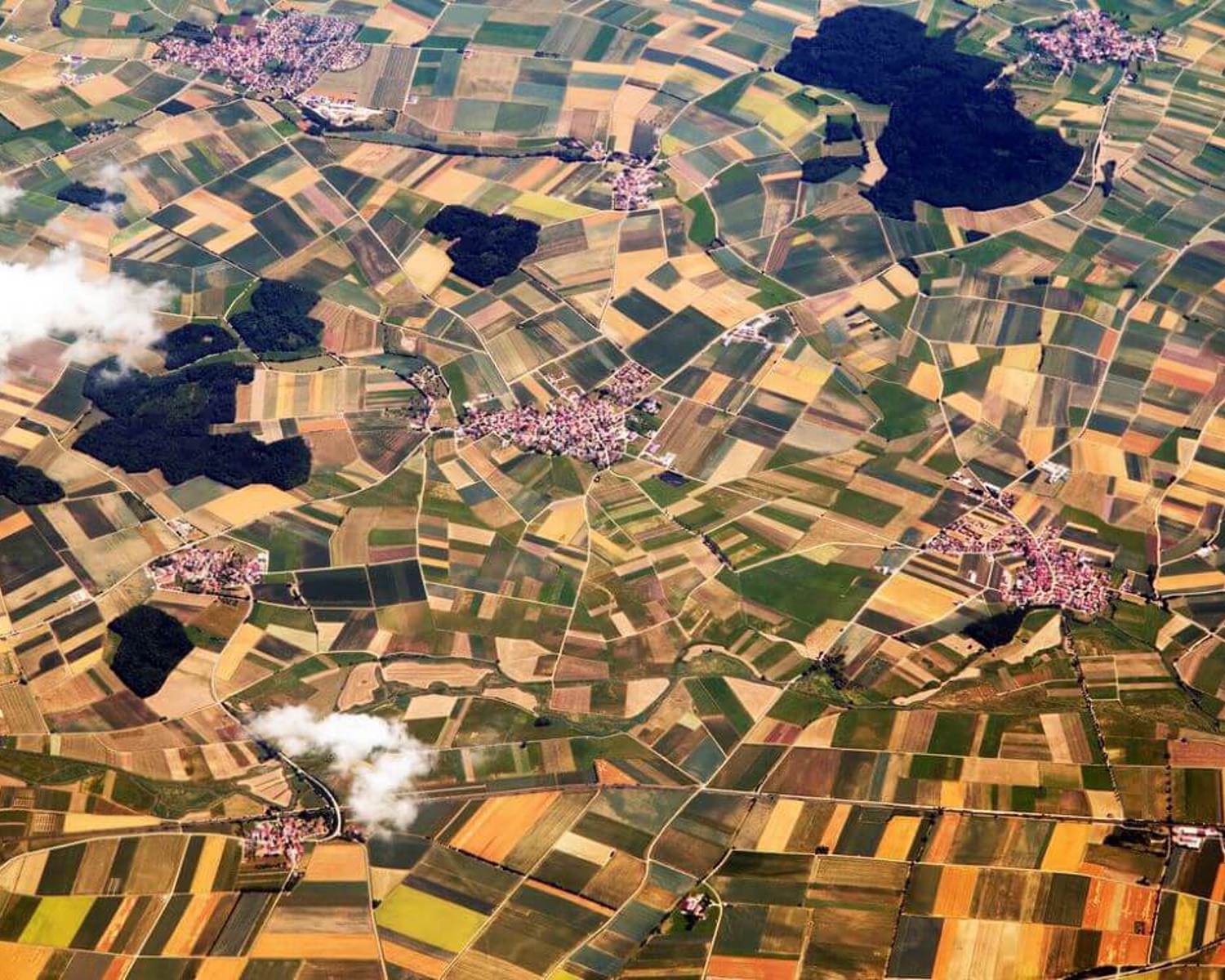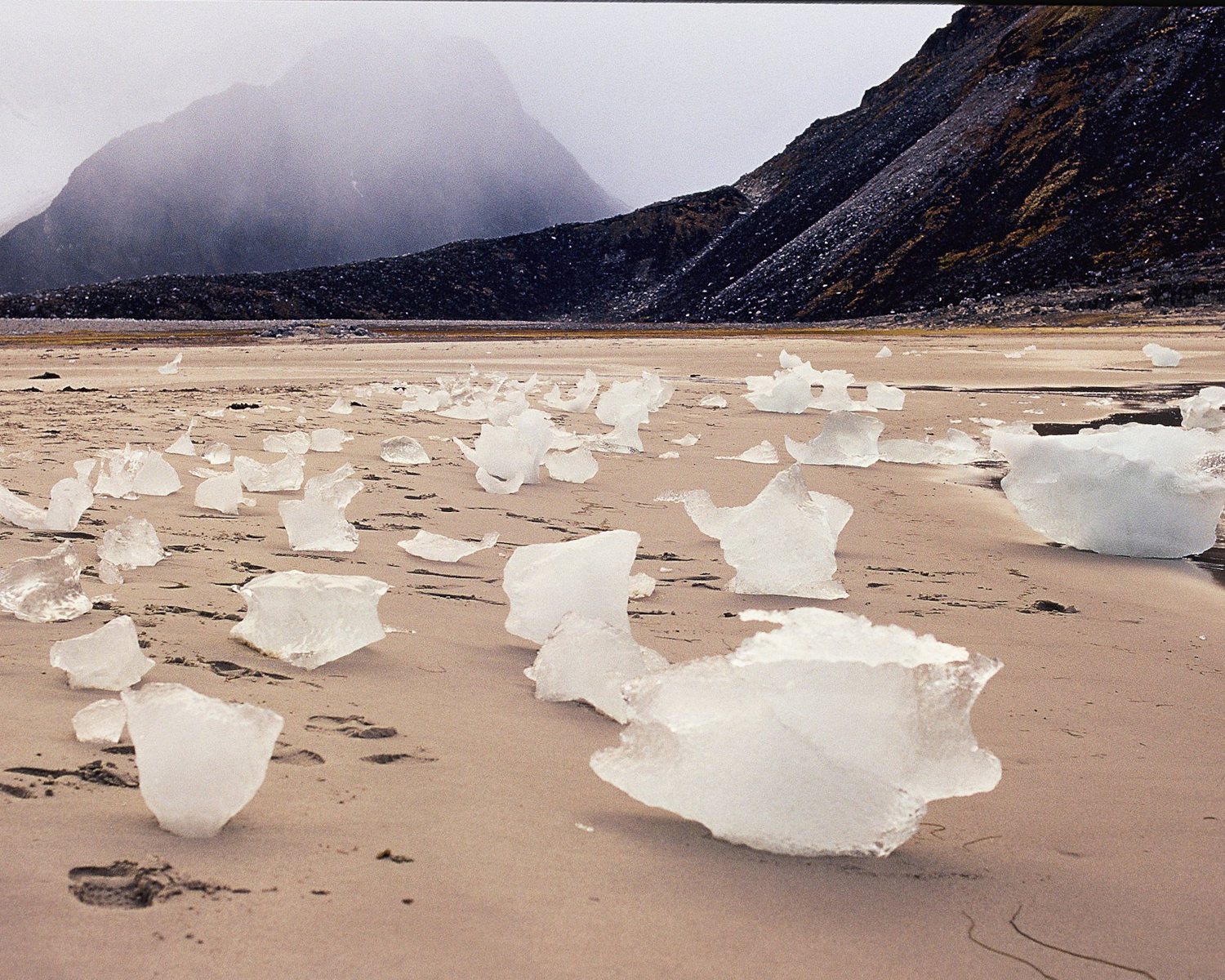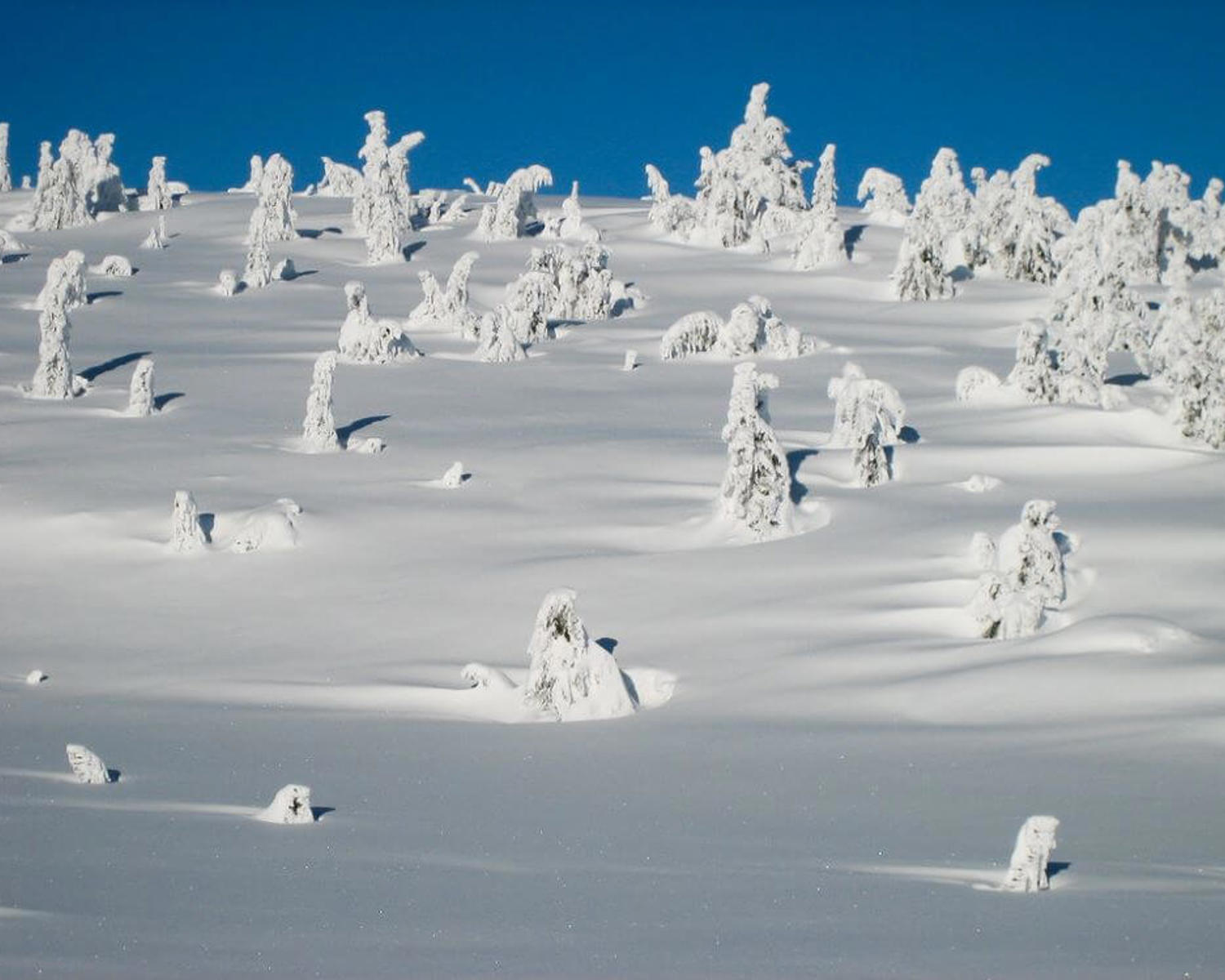Bio-geoengineering to increase crop albedo

Surface albedo has a significant impact on global climate (Zhang et al. 2022). Plants play an important role in this. Matthews et al. (2003), for example, estimate that the spread of agriculture has led to a global cooling of around 0.17°C, as agricultural crops tend to have a higher albedo than wild vegetation (Monteith and Unsworth 1990).
The term Bio-geoengineering is used in several different ways related to the modification of living organisms (see for instance its usage by Peacock, 2015, and Reindeer management elsewhere in this report). Bio-geoengineering has for example been linked to the idea to increase the capabilities of peatlands to absorb carbon (Freeman et al. 2012), and to the aim to increase precipitation (Branch and Wulfmeyer 2019). However, here it refers to the idea to increase land surface albedo by growing higher-albedo plants, for example: the selection for broader leaves in trees (Ridgwell et al. 2009). To achieve this, the planting of already existing variants of a species or close relatives could already suffice, although gene editing might also be an option (Ridgewell et al. 2009). The topic has many links to other forms of surface albedo management (see Land Management and reindeer herding). Bio-geoengineering could be especially important when considering biofuels because the large-scale usage of forest harvesting (Bright et al. 2011) or cultivation of specific crops (Cai et al. 2016; Abraha et al. 2021) can have significant albedo effects.
Analysis overview

Technological Readiness Level (TRL)
Medium 2
Crops have always been selected for specific purposes in agriculture, and Bio-geoengineering could be seen as adding one more trait to a list of desired qualities. Ridgewell et al. (2009) say that opposed to other SRM measures, the infrastructure is already in place and relatively easily operationable. However, there have not been enough focussed studies into the topic to give clarity on the potential readiness of Bio-geoengineering, which would in any case be highly case dependent.
Because the climate effect of plants can be highly complex and multiple and would have to be carefully analyzed so as not to have detrimental side-effects. As is the case for agriculture as a whole, it is also clearly required that such schemes be viable under a warming climate and increasingly high temperature extremes (Batissi and Naylor, 2009). Although Ridgewell et al (2009) and Singarayer and Davies-Barnard, 2012 stress that such practices need not negatively affect food yields, Genesio et al. (2020) describe an experiment with an albedo enhancing soy bean variant that would however reduce overall yields.
Technological Readiness Level (TRL)
A technology with a TRL of 4-6: TRL 4 – validated in lab; TRL 5 – validated in relevant environment; TRL 6 – demonstrated in relevant environment

Scalability
Medium 2
Scalability
Physically somewhat scalable; linear efficiency

Timeliness for near-future effects
Medium 2
Timeliness for near-future effects
Implemented in time to make some difference, although questionable

Northern + Arctic potential
Low 1
As stated above, Bio-geoengineering can have significant regional effects. Sieber et al (2022) field trial and satellite observation study found significant radiative forcing reduction potential for different kinds of agricultural crops in Northern Europe. Model studies found the effects of their global application were most pronounced in the Northern regions. Ridgewell et al. (2009) and Singarayer et al. (2009) show that cooling in their studies was most pronounced in Northern hemisphere Eurasia and America, and that large-scale implementation could even slightly delay Arctic sea-ice retreat. Irvine et al (2011) model study equally shows cropland geoengineering led to slight increases in sea ice thickness and recovery, and in snow depth.
However, it is not clear if the northern and Arctic regions are best suited for the application of Bio-geoengineering. Smoliak et al (2022) for example find that the highest potential for surface-based albedo interventions is clearly in the tropics and subtropics. Because of the prominence of forestry in the northern regions, this would partially hang together with findings from forestry management (see Forest management and Land management). Moreover, since Northern and Arctic regions are mostly covered by snow during winter season, any kind of land mitigation strategies should be carefully investigated as they might interfere with the effect of winter albedo (Bright et al, 2015).
Northern + Arctic potential
No noticeable extra positive effect beyond the global average; technology is unsuited to the Arctic

Global potential
Medium 2
Although the global potential for albedo surface management is significant Smoliak et al (2022), and can be important for climate mitigation strategies (Zhang et al, 2022), it is generally accepted that effects would be mostly regional. In the estimates of Lenton and Vaughan (2009) the global forcing potential when applied to all the world's grasslands would be −0.51 W m−2, and Irvine et al (2011) model study shows a maximum global cooling of 0.23°C.
The local effects could however be significant, as Genesio et al. (2020) described their experimental results that the introduction of a soybean mutant reduced local radiative forcing by −4.1 W/m-2. Liu et al (2022) also found that the potential impact of surface albedo management on the Canadian prairies could be significant, and in CO2 equivalent terms 'comparable to that due to soil carbon sequestration.’ Smoliak et al (2022) therefore urge that it should be explored where surface albedo could achieve cost-effective climate positive effects, and disagree with the simple dismissal of the measure because it is too expensive and inefficient on a global scale. This is confirmed by case studies, like Carrer et al (2018) who found that strategically planted cover crops, which increase albedo of dark soil, 'may mitigate up to 7% of the human-induced GHG agricultural emissions per year'. Vendig et al (2023) moreover found that the use of cover crops might be especially promising as it both increased soil carbon levels and increased crop yields.
Global potential
Statistically detectable impacts

Cost - benefit
Cost-effective 3
Cost - benefit
Low investment cost compared to the avoided damage cost (e.g., a few %) and/or inexpensive relative to other measures with similar impact

Environmental risks
Some risk 2
Environmental risks
More widespread and possibly regional impacts that extend beyond the immediate solution deployment location

Community impacts
Neutral 2
Community impacts
Unnoticeable or negligible positive or negative effects

Ease of reversibility
Easy 3
Ease of reversibility
Easily reversible naturally

Risk of termination shock
Low risk 3
Risk of termination shock
Low or insignificant termination shock or damage

Legality/governance
Possible 3
Legality/governance
Currently legal to deploy, with governance structures in place to facilitate it and/or financial incentives to develop it

Scientific/media attention
Medium 2
Scientific/media attention
Some attention within the scientific community, including published research and funding programmes; some media attention; some commercial interest
References
Abraha, M.; Chen, J.; Hamilton, S.K.; Sciusco, P.; Lei, C.; Shirkey, G.; Yuan, J.; Robertson, G.P. Albedo-Induced Global Warming Impact of Conservation Reserve Program Grasslands Converted to Annual and Perennial Bioenergy Crops. Environ. Res. Lett. 2021, 16, 84059. https://doi.org/10.1088/1748-9326/ac1815
Battisti DS, Naylor RL (2009) Historical Warnings of Future Food Insecurity with Unprecedented Seasonal Heat. Science 323: 240-244. https://doi.org/10.1126/science.1164363
Branch, O., & Wulfmeyer, V. (2019). Deliberate enhancement of rainfall using desert plantations. Proceedings of the National Academy of Sciences, 116(38), 18841-18847. https://doi.org/10.1073/pnas.1904754116
Bright, R.M.; Stromman, A.H.; Peters, G.P. Radiative Forcing Impacts of Boreal Forest Biofuels: A Scenario Study for Norway in Light of Albedo. Environ. Sci. Technol. 2011, 45, 7570–7580. https://doi.org/10.1021/es201746b
Bright, R. M., Zhao, K., Jackson, R. B., & Cherubini, F. (2015). Quantifying surface albedo and other direct biogeophysical climate forcings of forestry activities. Global Change Biology, 21(9), 3246-3266. https://doi.org/10.1111/gcb.12951
Cai, H.; Wang, J.; Feng, Y.; Wang, M.; Qin, Z.; Dunn, J.B. Consideration of Land Use Change-Induced Surface Albedo Effects in Life-Cycle Analysis of Biofuels. Energy Environ. Sci. 2016, 9, 2855–2867. https://doi.org/10.1039/C6EE01728B
Carrer, D., Pique, G., Ferlicoq, M., Ceamanos, X., & Ceschia, E. (2018). What is the potential of cropland albedo management in the fight against global warming? A case study based on the use of cover crops. Environmental Research Letters, 13(4), 044030.
Freeman, C., Fenner, N., & Shirsat, A. H. (2012). Peatland geoengineering: an alternative approach to terrestrial carbon sequestration. Philosophical Transactions of the Royal Society A: Mathematical, Physical and Engineering Sciences, 370(1974), 4404-4421. https://doi.org/10.1088/1748-9326/aab650
Irvine, P. J., Ridgwell, A., & Lunt, D. J. (2011). Climatic effects of surface albedo geoengineering. Journal of Geophysical Research: Atmospheres, 116(D24). https://doi.org/10.1029/2011JD016281
Liu, J., Desjardins, R. L., Wang, S., Worth, D. E., Qian, B., & Shang, J. (2022). Climate impact from agricultural management practices in the Canadian Prairies: Carbon equivalence due to albedo change. Journal of Environmental Management, 302, 113938. https://doi.org/10.1016/j.jenvman.2021.113938
Nogués Mestres, S., & Azcón Bieto, J. (2013). Potential of local bio-geoengineering to mitigate dangerous temperature increases in a global warming scenario. Journal of Earth Science & Climatic Change, 2013, vol. 4, p. 143. https://doi.org/10.4172/2157-7617.1000143
Peacock, K. (2015, December). Biogeoengineering for the Anthropocene. In: AGU Fall Meeting Abstracts (Vol. 2015, pp. GC33A-1255). Available at: https://agu.confex.com/agu/fm15/webprogram/Paper66771.html [Accessed 22 July 2024]
Ridgwell, A., Singarayer, J. S., Hetherington, A. M., & Valdes, P. J. (2009). Tackling regional climate change by leaf albedo bio-geoengineering. Current biology, 19(2), 146-150. https://doi.org/10.1016/j.cub.2008.12.025
Sieber, Petra, Sepp Böhme, Niclas Ericsson, and Per-Anders Hansson. (2022). Albedo on cropland: Field-scale effects of current agricultural practices in Northern Europe. Agricultural and Forest Meteorology Volume 321, 108978. https://doi.org/10.1016/j.agrformet.2022.108978
Singarayer, J. S., & Davies-Barnard, T. (2012). Regional climate change mitigation with crops: context and assessment. Philosophical Transactions of the Royal Society A: Mathematical, Physical and Engineering Sciences, 370(1974), 4301-4316. https://doi.org/10.1098/rsta.2012.0010
Smoliak, B. V., Gelobter, M., & Haley, J. T. (2022). Mapping potential surface contributions to reflected solar radiation. Environmental Research Communications, 4(6), 065003. https://doi.org/10.1088/2515-7620/ac7a25
Singarayer, J. S., Ridgwell, A., & Irvine, P. (2009). Assessing the benefits of crop albedo bio-geoengineering. Environmental Research Letters, 4(4), 045110. https://doi.org/10.1088/1748-9326/4/4/045110
Vendig, I., Guzman, A., De La Cerda, G., Esquivel, K., Mayer, A. C., Ponisio, L., & Bowles, T. M. (2023). Quantifying direct yield benefits of soil carbon increases from cover cropping. Nature Sustainability, 1-10. https://doi.org/10.1038/s41893-023-01131-7
Zhang, X., Jiao, Z., Zhao, C., Qu, Y., Liu, Q., Zhang, H., ... & Cui, L. (2022). Review of Land Surface Albedo: Variance Characteristics, Climate Effect and Management Strategy. Remote Sensing, 14(6), 1382. https://doi.org/10.3390/rs14061382
Zhang, Z., Moore, J. C., Huisingh, D., & Zhao, Y. (2015). Review of geoengineering approaches to mitigating climate change. Journal of Cleaner Production, 103, 898-907. https://doi.org/10.1016/j.jclepro.2014.09.076








